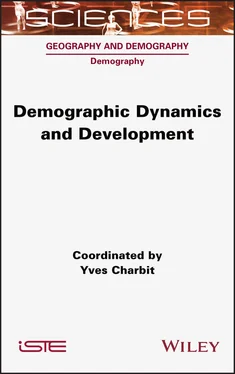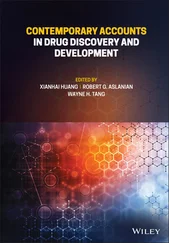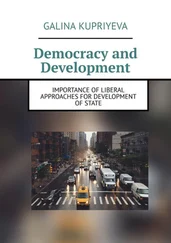And therefore, it is necessary to study the social, regional and cultural dimensions of demographic trends in more depth. This is what has led to a considerable number of works on the subject, for decades and still nowadays.
It is in fact paradoxical and stimulating that the concept of demographic transition has been criticized from all sides, but that it is at the origin of fundamental investigations to understand the common history and the possible future of demographic changes worldwide.
Albizu-Campos Espiñeira, J.C. (2000). Mortalidad y supervivencia en Cuba en los 90 . Centro de Estudios Demográficos, Barcelona and Universidad de La Habana, Cuba.
Arriaga, E.E. (1968). Components of city growth in selected Latin American countries. The Milbank Memorial Fund Quarterly , 46(2), 237–252.
Avdeev, A., Eremenko, T., Festy, P., Gaymu, J., Le Bouteillec, N., Springer, S. (2011). Populations and demographic trends of European countries, 1980–2010. Population , 66(1), 9–129.
Becker, G. (1991). Fertility and the Economy . Population Research Center/University of Chicago, Chicago.
Bongaarts, J. (1978). A framework for analyzing the proximate determinants of fertility. Population and Development Review , 4, 105–132.
Bongaarts, J. and Cotts Watkins, S. (1996). Social interactions and contemporary fertility transitions. Population and Development Review , 22(4), 639–682.
Boserup, E. (1985). Economic and demographic interrelationships in sub-Saharan Africa. Population and Development Review , 11(3), 393–398.
Bourgeois-Pichat, J. (1976). Baisse de la fécondité et descendance finale. Population , 31(6), 1045–1097.
Bourgeois-Pichat, J. (1979). La baisse actuelle de la fécondité en Europe s’inscrit-elle dans le modèle de la transition démographique ? Population , 2, 267–305.
Caldwell, J.C. (1982). The wealth flows theory of fertility decline. In Determinants of Fertility Trends: Theories Re-examined , Hohn, C., Mackensen, T. (eds). Ordina, Liège.
Caldwell, J.C., Orubuloye, I.O., Caldwell, P. (1992). Fertility decline in Africa: A new type of transition? Population and Development Review , 18(2), 211–242.
Camisa, Z.C. (1978). La nupcialidad de las mujeres solteras en América latina. Notas de Población , 18, Naciones Unidas Comisión Económica para América Latina (CEPAL), Santiago.
Capo-Chichi, P.V.A. (1999). Fertility transition in Benin: New reproductive patterns or traditional behaviours? PhD Thesis, London School of Hygiene & Tropical Medicine, London [Online]. Available at: http://researchonline.lshtm.ac.uk/682287[Accessed 22 February 2020].
CEPAL (2019). Panorama Social de América Latina 2019 . United Nations, Comisión Económica para América Latina y el Caribe, Santiago.
Chesnais, J.-C. (1986a). La transition démographique : étapes, formes, implications économiques. Étude de séries temporelles (1720–1984) relatives à 67 pays . INED, Paris.
Chesnais, J.-C. (1986b). La transition démographique : étapes, formes, implications économiques. Etude de séries temporelles (1720–1984) relatives à 67 pays. Présentation d’un Cahier de l’INED. Population , 41(6), 1059–1070.
Chesnais, J.-C. (2002). La transition démographique : 35 ans de bouleversements (1965–2000). In La Population du monde. Géants démographiques et défis internationaux , 2nd edition, Chasteland, J.-C., Chesnais, J.-C. (eds). INED, Paris.
Coale, A.J. (ed.) (1973). The demographic transition reconsidered. In International Population Conference . UIESP, Liège.
Coale, A.J. and Cotts Watkins, S. (eds) (1986). The Decline of Fertility in Europe . Princeton University Press, Princeton.
Cosio Zavala, M.E. (1992). La transición demográfica en América Latina y en Europa. Notas de Población , Centro Latinoamericano de Demografía (CELADE), 20(56), 11–32.
Cosio Zavala, M.E. (1996). Malthusianisme de la pauvreté au Mexique. In Populations. L’État des connaissances , Leridon, H. (ed.). INED/La Découverte, Paris.
Cosio Zavala, M.E. (1998). Changements démographiques en Amérique latine . Estem, Paris.
Cosio Zavala, M.E. (2011). Démographie, pauvreté et inégalités. In Les enjeux du développement en Amérique latine. Dynamiques socioéconomiques et politiques publiques , Quenan, C., Velut, S. (eds). Institut des Amériques et Agence française de développement, Paris.
Cosio Zavala, M.E. (2012). Les transitions démographiques du XX esiècle dans les pays en développement, des contre-exemples théoriques ? Les Cahiers D´EMAM , 21, 13–31.
Cosio Zavala, M.E. (2017). Les jeunes en Amérique latine, un point de vue démographique. Problèmes d’Amérique latine , 105(2), 13–28.
Cosio Zavala, M.E. and Paéz, O. (2016). Tendencias y determinantes de la fecundidad en México: las desigualdades sociales. In Generaciones, cursos de vida y desigualdad social , Coubès, M.L., Solís, P., Cosio Zavala, M.E. (eds). El Colegio de México/El Colegio de la Frontera Norte, Mexico/Tijuana.
Davis, K. (1945). The world demographic transition. The Annals of the American Academy of Political and Social Science , 237(1), 1–11.
Davis, K. and Blake, J. (1956). Social structure and fertility: An analytic framework. Economic Development and Cultural Change , 4, 211–235.
Delaunay, D. and Cosio Zavala, M.E. (1993). Populations et sociétés. In L’Amérique du Sud aux XIXe et XXe siècles. Héritages et territoires , Rivière d’Arc, H. (ed.). Armand Colin, Paris.
Fawcett, J.T. (1983). Perceptions of the value of children: Satisfactions and costs. In Determinants of Fertility in Developing Countries: A Summary of Knowledge, volume 1. Supply and Demand for Children , Bulatao, R., Lee, R. (eds). Academic Press, New York.
Festy, P. (1979). La fécondité des pays occidentaux de 1870 à 1970 . INED/PUF, Paris.
Guzmán, J.M., Rodríguez, J., Martínez, J., Contreras, J.M., González, D. (2006). La démographie de l’Amérique latine et de la Caraïbe depuis 1950. Population , 61(5), 623–733.
Landry, A. (1982). La Révolution démographique : études et essais sur les problèmes de la populatio n. INED, Paris.
Leridon, H. and Toulemon, L. (2002). La régulation des naissances se généralise. In La Population du monde. Géants démographiques et défis internationaux , 2nd edition, Chasteland, J.-C., Chesnais, J.-C. (eds). INED, Paris.
Lesthaeghe, R. (2010). The unfolding story of the second demographic transition. Population and Development Review , 36(2), 211–251.
Lesthaeghe, R. and Jolly, C. (1995). The start of the sub-Saharan fertility transition: Some answers and many questions. Journal of International Development , 7(l), 25–45.
Lesthaeghe, R. and Vanderhoeft, C. (2001). Ready, willing and able. A conceptualization of transitions to new behavioral forms. In Diffusion Processes and Fertility Transition , Casterline, J.B. (ed.). US National Research/Committee on Population, Washington.
Malthus, T.R. (1980). Essai sur le principe de population . INED, Paris.
McNicoll, G. (1980). Institutional determinants of fertility change. Population and Development Review , 6(3), 441–462.
Meslé, F. and Vallin, J. (1995). La mortalité dans le monde : tendances et perspectives . Centre français sur la population et le développement, Paris.
Meslé, F. and Vallin, J. (2002). La transition sanitaire : tendances et perspectives. In Démographie, analyse et synthèse, volume III. Les déterminants de la mortalité , Caselli, G., Wunsch, G., Vallin, J. (eds). INED, Paris.
Читать дальше












